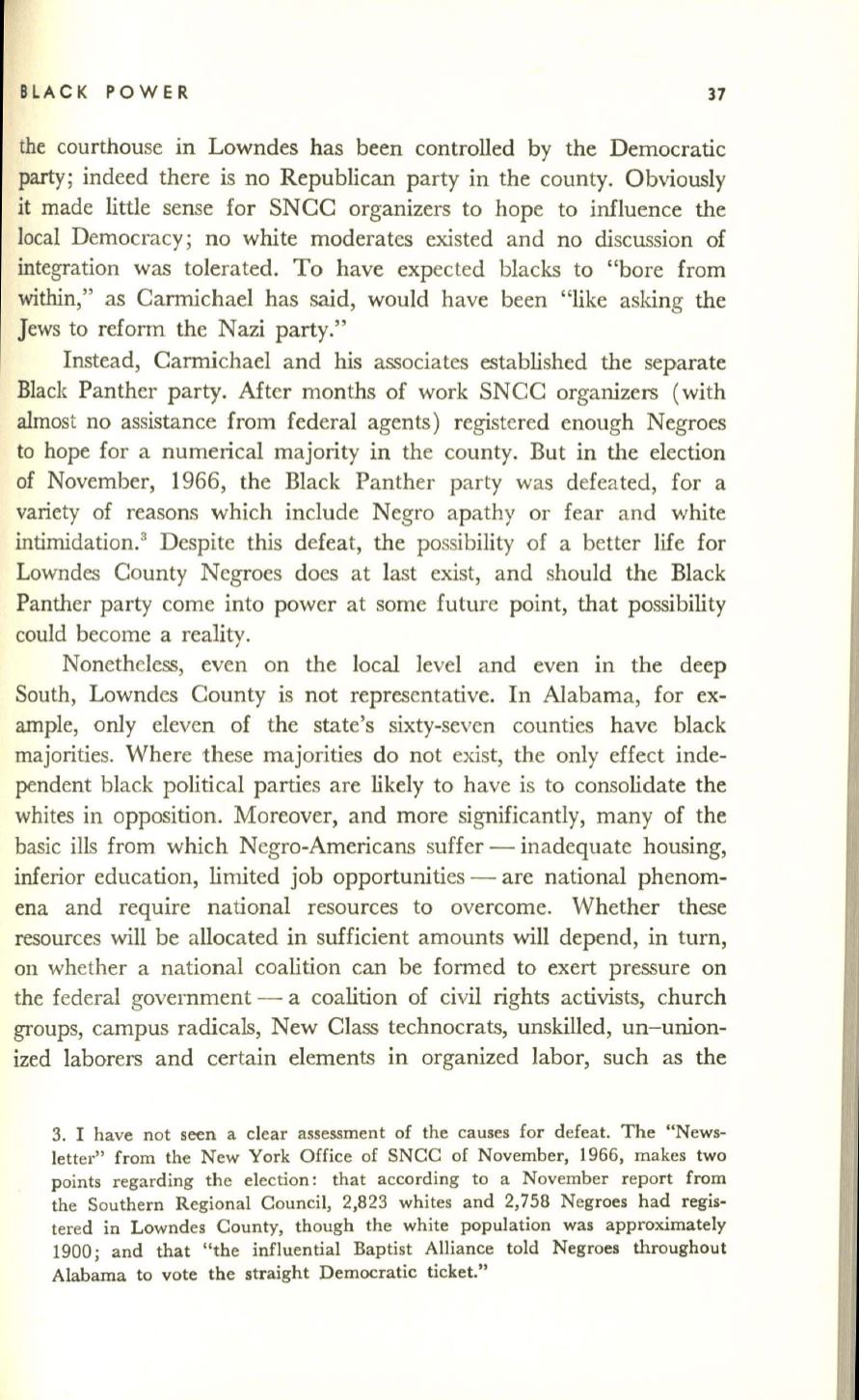
BLACK
POWER
37
the courthouse in Lowndes has been controlled by the Democratic
party; indeed there is no Republican party in the county. Obviously
it made little sense for SNCC organizers to hope to influence the
local Democracy; no white moderates existed and no discussion of
integration was tolerated. To have expected blacks to "bore from
within,"
as Carmichael has said, would have been "like asking the
Jews to reform the Nazi party."
Instead, Carmichael and
his
associates established the separate
Black Panther party. After months of work SNCC organizers
(with
almost no assistance from federal agents) registered enough Negroes
to hope for a numerical majority in the county. But in the election
of November, 1966, the Black Panther party was defeated, for a
variety of reasons which include Negro apathy or fear and white
intirnidation.
3
Despite
this
defeat, the possibility of a better life for
Lowndes County Negroes does at last exist, and should the Black
Panther party come into power at some future point, that possibility
could become a reality.
Nonetheless, even on the local level and even in the deep
South, Lowndes County is not representative. In Alabama, for ex–
ample, only eleven of the state's sixty-seven counties have black
majorities. Where these majorities do not exist, the only effect inde–
pendent black political parties are likely to have is to consolidate the
whites in opposition. Moreover, and more significantly, many of the
basic ills from which Negro-Americans suffer - inadequate housing,
inferior education, limited job
opportunities
-
are national phenom–
ena and require national resources to overcome. Whether these
resources will be allocated in sufficient amounts will depend, in turn,
on whether a national coalition can be formed to exert pressure on
the federal government - a coalition of civil rights activists, church
groups, campus radicals, New Class technocrats, unskilled, un-union–
ized laborers and certain elements in organized labor, such as the
3. I have not seen a clear assessment of the causes for defeat. The "News–
letter" from the New York Office of SNCC of November, 1966, makes two
points regarding the election: that according to a November report from
the Southern Regional Council, 2,823 whites and 2,758 Negroes had regis–
tered in Lowndes County, though the white population was approximately
1900· and that "the influential Baptist Alliance told Negroes throughout
Alab~ma
to vote the straight Democratic ticket."


